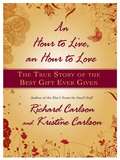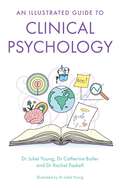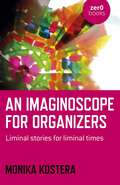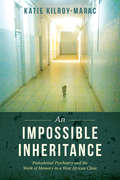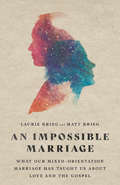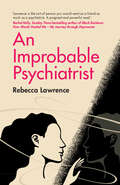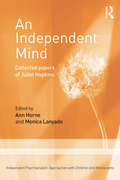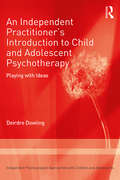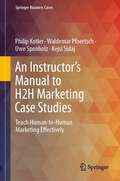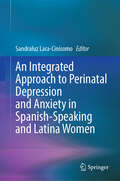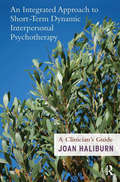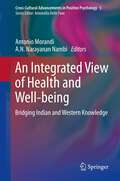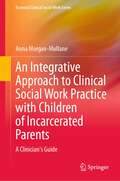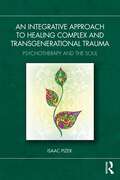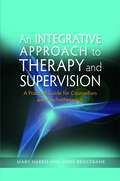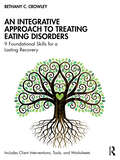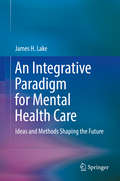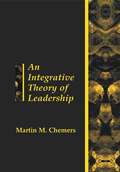- Table View
- List View
An Honest Woman: A Memoir of Love and Sex Work
by Charlotte ShaneThrough the lens of her years spent as a sex worker, Charlotte Shane offers a provocative and tender reckoning of what it means to be a heterosexual woman and a feminist in a misogynistic society.In her early twenties, Charlotte Shane quit her women&’s studies graduate program to devote herself to sex work because it was a way to devote herself to men. Her lifelong curiosity about male lust, love, selfishness, and social capital dovetailed with her own insatiable desire for intimacy to sustain a long career in escorting, with unexpectedly poignant results. Shane uses her personal and professional history to examine how men and women struggle in their attempts at romantic and sexual bonding, no matter how true their intentions. As she takes stock of her relationships—with clients, with her father, with friends, with married men, and later, with her own husband—she tells a candid and haunting tale of love, marriage, and (in)fidelity, as seen through the eyes of the perpetual &“other woman.&” Braiding the personal and the universal, Shane&’s memoir is a merciless and moving love letter to straight men and an indictment of habitual dishonesty, a condemnation of every social constraint acting on heterosexual unions, and a hopeful affirmation of the possibility for true connection between men and women.
An Hour to Live, an Hour to Love: The True Story of the Best Gift Ever Given
by Richard Carlson Kristine CarlsonIf you had one hour to live and could make just one phone call, who would you call? What would you say? Why are you waiting? Richard Carlson's sudden, tragic death in December 2006 left his millions of fans reeling, but even their many letters, calls, and emails couldn't erase the loss felt by his wife, Kristine. To try and come to terms with her loss, she pored over 25 years of love letters, reliving the memories and cherishing her late husband's memory. But one letter stood out. Richard had written to his wife on their 18th wedding anniversary and attempted to answer the question: if you had one hour to live, what would you do, who would you call, and what would you say? An Hour to Live, an Hour to Love is a profoundly moving book that shows the importance of treasuring each day as the incredible gift it is.
An Illustrated Guide to Clinical Psychology
by Juliet Young Dr Rachel Paskell Dr Catherine ButlerWhat does a day in the life of a practising clinical psychologist look like? Which therapeutic approaches do they use? How do you become a clinical psychologist? Answering these questions and more, An Illustrated Guide to Clinical Psychology is ideal for aspiring, trainee, and newly qualified clinical psychologists to learn more about the field. Written by clinical psychologists, and featuring illustrations by one of the authors, Juliet Young, this accessible book explores the history and context of clinical psychology, the key skills, tools, and theoretical foundations for clinical psychologists, and the main therapeutic approaches that they use. The book navigates through the necessary components to understand the underpinning elements of the profession, with a taster of different areas that clinical psychologists work in. Through a critical lens, it also explores topical debates within the profession and addresses issues of diversity and inclusion.
An Image Darkly Forming: Women and Initiation (Psychology Revivals)
by Bani ShorterOriginally published in 1987, a well-known Jungian analyst, the late Bani Shorter writes here about how women are initiated into becoming themselves. Her book was an important contribution to the field of analytical psychology at the time, as well as to the increasingly popular study of women’s spirituality. In former times transitions from one stage of life to another were prepared for and marked by ritual initiation; in modern times this necessity is overlooked and women’s natural development is made more difficult as a consequence. Through working in close therapeutic relationships with women, Bani Shorter found that when challenged by crises and transitions in their lives, today’s women instinctively create rituals nevertheless to mark their journey towards maturation, wholeness and meaning. In this process they discover something of who they are and recognise dimensions of themselves which have been previously repressed and undreamed of. The stories unfolded here can be a guide for all women through their own rites of passage.
An Imaginoscope for Organizers: Liminal Stories for Liminal Times
by Monika KosteraAn Imaginoscope for Organizers offers practical exercises to use both individual and collective imagination to activate and mobilize creative organizing impulses. It proposes intellectual, symbolic and poetic food for thought and practice. Each chapter is a step on the quest for creative ideas and practices and introduces a language that can be used to invent and communicate your own.
An Impossible Inheritance: Postcolonial Psychiatry and the Work of Memory in a West African Clinic
by Katie Kilroy-MaracWeaving sound historical research with rich ethnographic insight, An Impossible Inheritance tells the story of the emergence, disavowal, and afterlife of a distinctive project in transcultural psychiatry initiated at the Fann Psychiatric Clinic in Dakar, Senegal during the 1960s and 1970s. Today’s clinic remains haunted by its past and Katie Kilroy-Marac brilliantly examines the complex forms of memory work undertaken by its affiliates over a sixty year period. Through stories such as that of the the ghost said to roam the clinic’s halls, the mysterious death of a young doctor sometimes attributed to witchcraft, and the spirit possession ceremonies that may have taken place in Fann’s courtyard, Kilroy-Marac argues that memory work is always an act of the imagination and a moral practice with unexpected temporal, affective, and political dimensions. By exploring how accounts about the Fann Psychiatric Clinic and its past speak to larger narratives of postcolonial and neoliberal transformation, An Impossible Inheritance examines the complex relationship between memory, history, and power within the institution and beyond.
An Impossible Marriage: What Our Mixed-Orientation Marriage Has Taught Us About Love and the Gospel
by Laurie Krieg Matt Krieg"People say our marriage is impossible." Laurie and Matt Krieg are in a mixed-orientation marriage: a marriage in which at least one partner's primary attraction isn't toward the gender of their spouse. In the Kriegs' case, Laurie is primarily attracted to women—and so is Matt. Some find the idea of mixed-orientation marriage bewildering or even offensive. But as the Kriegs have learned, nothing is impossible with God—and that's as true of their marriage as anyone else's. In An Impossible Marriage, the Kriegs tell their story: how they met and got married, the challenges and breakthroughs of their journey, and what they've learned about marriage along the way. Christianity teaches us that marriage is a picture of Jesus’ love for the church—and that's just as true in a mixed-orientation marriage as in a straight one. With vulnerability and wisdom, this book lays out an engaging picture of marriage in all its pain and beauty. It's a picture that points us, over and over again, to the love and grace of Jesus—as marriage was always meant to do.
An Improbable Psychiatrist
by Rebecca LawrenceAn Improbable Psychiatrist is a powerful and insightful story of mental illness, told through the dual lens of a doctor, who later became a patient. Rebecca Lawrence shares her story of being a doctor and a psychiatrist while living with bipolar disorder. She details her experience of being an inpatient on a psychiatric ward, receiving electroconvulsive therapy, training as a doctor, and navigating the challenges of grief, loss, and family. Through her inspiring story, Rebecca aims to reduce the stigma surrounding mental illness and provide comfort to those who suffer from severe mood disorders and those who care for them. Told through engaging and captivating prose, this book will pull you into Rebecca's world and leave you with the powerful reminder that with the right support and treatment, it is possible to live with severe mental illness. Ultimately, this is a story of hope.
An Independent Mind: Collected papers of Juliet Hopkins
by Juliet Hopkins‘Juliet Hopkins has quietly encouraged and inspired generations of colleagues and students’ (Dilys Daws). An Independent Mind: Collected Papers of Juliet Hopkins follows the professional journey and influence of an innovative figure in the history of child psychotherapy. Juliet Hopkins spans Kleinian and Independent psychoanalytic traditions and brings a critical scientific mind to these theories. Amongst her main influences were Winnicott and Bowlby – both of whom her work addresses. This book contains her most important papers, bringing together psychoanalytic theory, family and individual approaches, attachment theory and infant–parent work. With a writing style that is clear, straightforward and readily accessible, Juliet Hopkins promotes a scholarly integrative way of thinking about psychotherapy without compromising the basic psychoanalytic principles that inform her work. The papers have been gathered chronologically into four sections, each given context by the Editors with a brief introduction: Trauma and child psychotherapy Attachment and child psychotherapy Infant-parent psychotherapy Integrating and exploring Winnicott An Independent Mind: Collected Papers of Juliet Hopkins is a collection of classic papers whose relevance today is undiminished. It will be essential reading for established and trainee child and adult psychotherapists and psychoanalysts; counsellors, psychologists, psychiatrists interested in psychoanalytic approaches; social workers, nursery workers and those who work with children in voluntary organizations.
An Independent Practitioner's Introduction to Child and Adolescent Psychotherapy: Playing with Ideas
by Deirdre DowlingAn Independent Practitioner's Introduction to Child and Adolescent Psychotherapy: Playing with Ideas is a comprehensive guide to child and adolescent psychotherapy, taking the practitioner from the initial meeting through the therapeutic process with young people of different ages, to the ending of psychotherapy. It includes approaches to working with parents and the family, introduces theoretical ideas simply and provides references for further learning. Part of the popular Independent Psychoanalytic Approaches series, this book is written from an Independent perspective, but it is also an account of Deirdre Dowling’s approach, developed from her considerable experience of working in the NHS and now as a private practitioner. An Independent Practitioner's Introduction to Child and Adolescent Psychotherapy will be an indispensable guide for child psychotherapists (especially trainees), colleagues working in child and family mental health settings, play therapists, counsellors and support staff in schools and child care professionals working therapeutically in residential and community settings.
An Inquiry into the Foundations of Psychology (Psychology Library Editions: History of Psychology)
by Per SaugstadDr Saugstad’s dominant interest was in the area of thinking. Many psychologists would have been familiar with his published work in this field at the time. To gain a clearer understanding of the thought processes, he carried out extensive studies of perception. First published in 1965, this book originated in an attempt to reconcile a phenomenological and a behavioristic approach to psychology. Basic assumptions in phenomenology, behavioristics and psychophysics are examined. It is shown that in phenomenology theoretical concepts tend to be treated as observations, whereas in behavioristics observations tend to be treated as theoretical concepts. It is pointed out that the relationship between observer and observed event is confused throughout the history of psychology. This confusion, the author insists, is due to the fact that man’s cognitive processes are to a large extent unknown. In relating observations to each other, the psychologist will of necessity contaminate his observations unless he follows specific rules. This fundamental point had apparently not been previously realized by psychologists. In order to develop an adequate conception of scientific psychology, the nature of man’s cognitive processes must be taken into account. When this is done, one sees that drastic revisions of current conceptions of psychology are necessary. This book presents a conception of psychology which does take into account man’s cognitive processes.
An Instructor's Manual to H2H Marketing Case Studies: Teach Human-to-Human Marketing Effectively (Springer Business Cases)
by Philip Kotler Waldemar Pfoertsch Uwe Sponholz Kejsi SulajThis is an instructor's manual for the popular textbook 'H2H Marketing: Case Studies on Human-to-Human Marketing' (Springer, 2023). The authors have provided a perfect companion that enables teachers to adopt a case-by-case approach when using the material in the classroom.'H2H Marketing' focuses on redefining the role of marketing by reshaping the mindset of decision-makers and integrating concepts such as Design Thinking, Service-Dominant Logic, and Digitalization. By following this carefully designed manual, teachers can assist their students in gaining a deeper understanding of the case studies that illustrate various aspects of the concept, its fundamental elements, and its implementation.
An Integral Approach to Transformative Leadership: Dancing Through the Storm
by Dorrian AikenThis essential new book is a practical "how-to" guide to enhancing the quality of relationships between leaders and individuals in organisations – the proven key to maximising performance, building resilience, and retaining talent. Integral vision, seen through each of the four quadrants described in this book, gives access to a range of perspectives, irreducible to one another but each significant in adding a kaleidoscope of understanding to a topic or body of knowledge. The author draws on recent research which focuses on Integral theory and emphasises the benefits to an organisation, including cultivating, at several levels, leaders and teams through coaching, improving the quality of meetings, introducing an understanding of emotional intelligence, and more recently, addressing adult stages of development. The book also demonstrates how the Integral quadrants can bring clarity to interpersonal and cross-sector communication, especially in diagnosing, planning, and implementing team and organisational strategy. The concepts and practical skills explored in this book will be a valuable resource for senior leaders, human resources specialists, and in-house and external coaches focusing on leadership development, as well as students and trainers of coaching.
An Integrated Approach to Perinatal Depression and Anxiety in Spanish-Speaking and Latina Women
by Sandraluz Lara-CinisomoThis book makes a significant contribution to the literature by adopting an integrated perspective on perinatal depression and anxiety among Spanish-speaking and Latina women. These groups are often overlooked in research and face barriers to diagnosis and treatment. This groundbreaking book compiles essential and timely insights into the factors associated with perinatal depression and anxiety among Spanish-speaking and Latina women. It delves into crucial themes, such as migration-related experiences. Additionally, it explores policies in Latin America aimed at addressing maternal mental health needs. Furthermore, the book provides fundamental knowledge on tailoring culturally and linguistically appropriate interventions for perinatal depression and anxiety among Spanish-speaking and Latina women. Recognizing the significance of context, it offers perspectives on the effects of natural disasters and health crises on perinatal mental health and mother-infant bonding. The book advocates for the development of a research and mental health workforce attuned to the diverse needs of Spanish-speaking and Latina/Latinx perinatal women. It also discusses the value of biomarkers in perinatal depression research. In sum, this book brings together topic experts from across the globe to provide a more holistic approach to perinatal depression and anxiety. Key topics covered include: Anxiety and Worry During the Perinatal Period: Why They Cannot Be Ignored Protective Factors Against Depression and Anxiety Among Latinas and Spanish-Speaking Women Culturally Sensitive Interventions for Latinas and Spanish-Speaking Women Advancing Research in Perinatal Mental Health in Spanish-Speaking Latin American Women Developing a Culturally Responsive Mental Health Workforce for Spanish-speaking and Latina/Latinx Birthing People with Perinatal Depression and Anxiety An Integrated Approach to Perinatal Depression and Anxiety in Spanish-Speaking and Latina Women is pertinent reading for individuals interested in pursuing a degree and profession in perinatal mental health, clinicians working with Spanish-speaking and Latina/Latinx perinatal women, researchers interested in working with Spanish-speaking and Latina/Latinx perinatal women, and educators training individuals pursuing a degree and profession in perinatal mental health.
An Integrated Approach to Short-Term Dynamic Interpersonal Psychotherapy: A Clinician's Guide
by Joan HaliburnShort-term dynamic interpersonal psychotherapy is an integrated, trauma-informed, contemporary, dynamic way of working with a range of mental health difficulties. Flexible though structured, phase-oriented, focused and time-limited, it is informed by the Conversational Model, Attachment and Interpersonal Theories and Brief Psychodynamic Psychotherapies, which are briefly described. It provides clinicians with a way of working with patients whose difficulties do not warrant long term therapy, who prefer a talking therapy or who have failed cognitive/behaviour therapies. With the help of examples, it guides the process of assessment and therapy with trauma in mind: using Conversational Model techniques where empathy replaces confrontation; resistance is seen as a fear of re-traumatization; defence mechanisms are regarded as adaptive coping mechanisms which later become maladaptive; transference interventions replace interpretations, and self-reflective capacity is encouraged rather than just insight. Separation anxiety is addressed and anxiety-provoking techniques are avoided, given that anxiety is a large part of most presentations.
An Integrated View of Health and Well-being: Bridging Indian and Western Knowledge (Cross-Cultural Advancements in Positive Psychology #5)
by A.N.Narayanan Nambi Antonio MorandiConcepts like Health and Well-being are not exclusive products of the Western culture. Research has widely demonstrated that the representation of the body and of its pathologies, as well as treatment and healing practices vary across cultures in relation to social norms and beliefs.The culture of India is a melting pot of nine main Darshanas, or philosophical systems, that share the common core of a realization of the self in society. India's traditional health system, Ayurveda, is a result of the practical application of the Darshanas to the observation of human nature and behavior. Ayurveda conceptualizes health, disease and well-being as multidimensional aspects of life, and it seeks to preserve a balance in individuals among their biological features, their psychological features and their environmental demands. The Ayurveda approach to health is remarkably similar to the eudaimonic conceptualization of well-being proposed by positive psychology, and the basic tenets of Ayurveda are deeply consistent with the latest developments of modern physics, which stresses the substantial interconnectedness among natural phenomena and their substrates. This text shows how the approach to health developed in Ayurveda can be fruitfully integrated in a general view of health and well-being that encompasses cultural and ideological boundaries. Specifically, it details the conceptualization of health as an optimal and mindful interaction between individuals and their environment.
An Integrative Approach to Clinical Social Work Practice with Children of Incarcerated Parents: A Clinician's Guide (Essential Clinical Social Work Series)
by Anna Morgan-MullaneThis book is an essential clinician's guide to understanding, unpacking, treating, and healing individual, familial, and communal wounds associated with parental incarceration. Readers gain familiarity with integrative micro and macro healing techniques and modalities that are currently being utilized as anti-racist, anti-oppressive, and innovative practices. They also develop an understanding of and deeper unpacking of their own biases within the therapeutic relationship. The book offers an extensive overview of clinical practice models such as trauma-focused cognitive behavioral therapy, narrative therapy, and relational and attachment-based therapy for treating trauma symptoms associated with children of incarcerated parents, their families, and their surrounding communities. The author provides guidance on healing complex trauma through phase-oriented, multimodal, and skill-focused treatment approaches, with emphasis on strengthening one's own narrative of power and pain while building community in supportive spaces. Among the topics covered:Why Criminal Justice Is Relevant to All Clinical PractitionersImpact of Secondary Incarceration: Collateral Consequences for Children and FamiliesPsychosocial Stressors for Children of Incarcerated Parents: Conspiracy of Silence and Ambiguous LossSupervision and the Therapeutic Alliance: Critical Consciousness and Anti-racist Clinical Training and UndoingClinical Partnership: Application of Dismantling Anti-Blackness Through Anti-oppressive Practice and Critical ConsciousnessAn Integrative Approach to Clinical Social Work Practice with Children of Incarcerated Parents enhances therapeutic relationships for social workers, teaches innovative clinical practices most effective for this population, and offers a comprehensive discussion and understanding of the complex traumas faced both historically and presently by children and families impacted by the criminal justice system. Although designed to inspire and train social workers, the guide has significantly wide-ranging application for mental health and medical providers and other clinicians interested in enhancing their work with children and families impacted by the criminal justice system in diverse clinical practice settings. Lay practitioners and policymakers within government and not-for-profit settings also will find the book of interest.
An Integrative Approach to Counseling: Bridging Chinese Thought, Evolutionary Theory, and Stress Management
by Robert G. SanteeAn Integrative Approach to Counseling: Bridging Chinese Thought, Evolutionary Theory, and Stress Management offers a global and integrative approach to counseling that incorporates multiple concepts and techniques from both eastern and western perspectives. The book identifies commonalities rather than the differences between them. The book also compares and contrasts the underlying cultural assumptions of western counseling with those of the Chinese perspectives of Confucianism, Daoism, and Buddhism, relative to integrating and applying a more global approach to helping individuals functionally adapt to challenges in their environments. The book will be used by faculty and students in those advanced undergraduate and graduate courses in psychology, counseling, or social work that cover such areas as introduction to counseling, counseling skills and techniques, counseling theories, multi-cultural awareness and counseling, and stress management.
An Integrative Approach to Healing Complex and Transgenerational Trauma: Psychotherapy and the Soul
by Isaac PizerThis book presents an integrative relational approach to treating trauma and psychological entanglements through autobiographical, philosophical and clinical reflections on the transgenerational dimension of the human experience and the self as an irreducible core of the person.The book commences with the author’s own journey growing up in a Jewish family deeply affected by transgenerational trauma from the Holocaust, providing an inspiring and reflective backdrop to this book’s contents. Isaac Pizer then describes and explains his philosophy of therapy, which holds psychotherapy and the treatment of trauma as a relational process that requires an inclusive awareness of the following dimensions of human experiencing: the physical, intrapsychic, relational, transgenerational, transpersonal. Exploring a psychotherapy that holds and integrates transgenerational awareness in the treatment of complex trauma, this book is supplemented with case studies and the author’s own experiences.This compelling and thought-provoking book is intended for therapists, therapists in training and people seeking knowledge and encouragement in their journeys of personal and collective healing, self-realisation and personal growth.
An Integrative Approach to Leader Development: Connecting Adult Development, Identity, and Expertise
by David V. Day Michelle M. Harrison Stanley M. HalpinThis book is a beginning, a first step, in taking leader development in organizations beyond conventional wisdom toward a scientifically sound research-based set of principles and practices. The authors looked beyond their own academic disciplines to bring to bear accumulated wisdom from researchers who have developed well-established and accepted
An Integrative Approach to Therapy and Supervision: A Practical Guide for Counsellors and Psychotherapists
by Mary Harris Anne BrockbankAn Integrative Approach to Therapy and Supervision presents an innovative and flexible model for therapy and supervision practice. The model draws on ideas from the psychological traditions of Transactional Analysis, Gestalt theory and Cognitive Behavioural Therapy to develop an integrated approach to working with clients and to developing a supervisor-supervisee relationship that can be adapted to suit the needs of individual personalities and situations. The authors lay out the theory underlying the model, how it relates to existing models of supervision, and demonstrate how the model works in practice using case material to illustrate the range of approaches that can be applied in a given scenario. This book is essential reading for both new and experienced practitioners, as well as those responsible for training therapists, counsellors and supervisors.
An Integrative Approach to Treating Babies and Children: A Multidisciplinary Guide
by Michael Shea Franklyn Sills Ann Diamond Weinstein John Wilks Anita Hegerty David Haas Dr Carolyn Goh Graham Kennedy Matthew Appleton Professor Franz Ruppert Thomas HarmsWorking with babies and children is most successful when therapists have a complete understanding and overview of all appropriate treatment options, and the effects of early influences on child health and development. This book shows therapists how to consider these factors in order to work more effectively within their individual areas of expertise. Contributors from a wide range of disciplines explore the influence of pregnancy, birth and family dynamics on the physical and mental health of babies and children. They show how these factors relate to common complaints, such as excessive and different types of crying, chronic illnesses and poor immune systems, and behavioural and attachment issues, and how complementary approaches can be best applied to treat these issues. This book also offers helpful advice for working within multidisciplinary teams. Illustrated with case studies and including examples from current research, this book is a valuable resource for therapists from diverse disciplines.
An Integrative Approach to Treating Eating Disorders: 9 Foundational Skills for a Lasting Recovery
by Bethany C. CrowleyAn Integrative Approach to Treating Eating Disorders walks therapists through how to effectively resolve the most common yet nuanced struggles that clients with disordered eating face on a daily basis.This straightforward workbook begins by demystifying the complexities and nuances of eating disorders. It then helps therapists understand the need for an integrative approach and walks them through how to assess a client’s biological, psychological, social, and spiritual domains as they correlate with disordered eating behaviors and thoughts. This is accomplished with the BASIC I.D. assessment model and a multimodal therapy framework, both created by Dr. Arnold Lazarus. Nine foundational skills are provided for clients to achieve lasting recovery and avoid the all-too-common relapse rate of eating disorders.Each foundational skill is presented in its own chapter, complete with data, case vignettes, worksheets, and exercises developed over twenty years of research and client management. With this book, therapists both new and experienced will boost their confidence, gain practical tools, and bring more efficiency to their individual or group sessions.
An Integrative Paradigm for Mental Health Care: Ideas and Methods Shaping the Future
by James H. LakeThis crucial volume provides a concise overview of the conceptual foundations and clinical methods underlying the rapidly emerging subspecialty of integrative mental healthcare. It discusses methods for guiding practitioners to individualized integrative strategies that address unique symptoms and circumstances for each patient and includes practical clinical techniques for developing interventions addressed at wellness, prevention, and treatment. Included among the overview:Meeting the challenges of mental illness through integrative mental health care.Evolving paradigms and their impact on mental health careModels of consciousness: How they shape understandings of normal mental functioning and mental illnessFoundations of methodology in integrative mental health careTreatment planning in integrative mental health careThe future of mental health careA New Paradigm for Integrative Mental Healthcare is relevant and timely for the increasing numbers of patients seeking integrative and alternative care for depressed mood, anxiety, ADHD, bipolar disorder, schizophrenia, and other mental health problems such as fatigue and chronic pain. “Patients are crying out for a more integrative approach, and this exemplary book provides the template for achieving such a vision.” -Jerome Sarris, MHSc, PhD, ND“For most conventionally trained clinicians the challenge is not “does CAM work?” but “how do I integrate CAM into my clinical practice?” Lake’s comprehensive approach answers this central question, enabling the clinician to plan truly integrative and effective care for the mind and body.”-Leslie Korn, PhD, MPH
An Integrative Theory of Leadership (Social Psychology Ser.)
by Martin ChemersA definition of leadership that would be widely accepted by the majority of theorists and researchers might say that "leadership is a process of social influence in which one person is able to enlist the aid and support of others in the accomplishment of a common task." The major points of this definition are that leadership is a group activity, is based on social influence, and revolves around a common task. While this specification seems relatively simple, the reality of leadership is very complex. Intrapersonal factors (thoughts and emotions) interact with interpersonal processes (attraction, communication, and influence) to have effects on a dynamic external environment. Each of these aspects brings complexity to the leadership process. It is the purpose of this book to make that complexity a bit more manageable, increasing the ability to understand what effective leadership is. This volume offers a comprehensive analysis and integration of the empirical research literature and major theories of leadership. It employs a functional analysis stressing what leaders must do to be effective and specifies the processes related to each function. The chapters provide an extensive review of the major approaches to leadership. Each chapter is discussed with an eye to explaining the basic principles, the research evidence, and where appropriate, the relationship of the theory or research program to other theories. In addition, this volume offers the most comprehensive treatment of cultural and gender factors in leadership of any recent book. The question of male-female differences in leadership style and performance is carefully analyzed against the empirical findings. The ultimate goal of this review of the literature is to provide a basis for the presentation of an integrative model of leadership that brings together function and process and provides an armature for integrating what is known.

